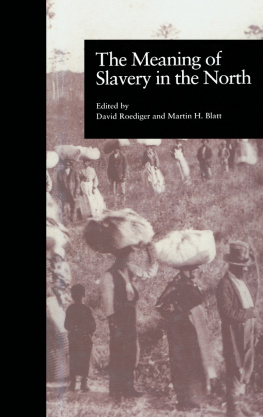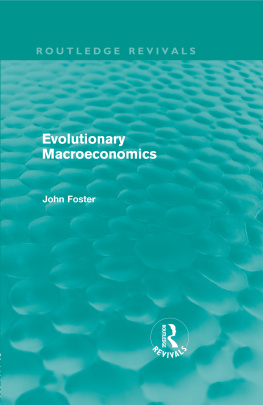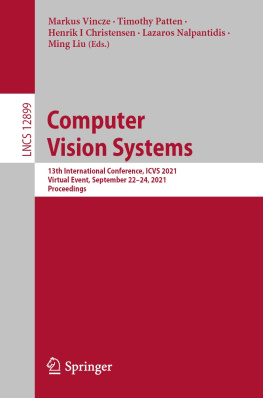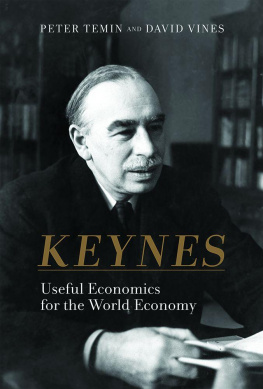John Markus Blatt - Dynamic economic systems : a post Keynesian approach
Here you can read online John Markus Blatt - Dynamic economic systems : a post Keynesian approach full text of the book (entire story) in english for free. Download pdf and epub, get meaning, cover and reviews about this ebook. year: 2019, genre: Children. Description of the work, (preface) as well as reviews are available. Best literature library LitArk.com created for fans of good reading and offers a wide selection of genres:
Romance novel
Science fiction
Adventure
Detective
Science
History
Home and family
Prose
Art
Politics
Computer
Non-fiction
Religion
Business
Children
Humor
Choose a favorite category and find really read worthwhile books. Enjoy immersion in the world of imagination, feel the emotions of the characters or learn something new for yourself, make an fascinating discovery.

- Book:Dynamic economic systems : a post Keynesian approach
- Author:
- Genre:
- Year:2019
- Rating:5 / 5
- Favourites:Add to favourites
- Your mark:
- 100
- 1
- 2
- 3
- 4
- 5
Dynamic economic systems : a post Keynesian approach: summary, description and annotation
We offer to read an annotation, description, summary or preface (depends on what the author of the book "Dynamic economic systems : a post Keynesian approach" wrote himself). If you haven't found the necessary information about the book — write in the comments, we will try to find it.
Dynamic economic systems : a post Keynesian approach — read online for free the complete book (whole text) full work
Below is the text of the book, divided by pages. System saving the place of the last page read, allows you to conveniently read the book "Dynamic economic systems : a post Keynesian approach" online for free, without having to search again every time where you left off. Put a bookmark, and you can go to the page where you finished reading at any time.
Font size:
Interval:
Bookmark:

Economic
Systems
First published 2000 by M.E. Sharpe
Published 2015 by Routledge
2 Park Square, Milton Park, Abingdon, Oxon OX14 4RN
711 Third Avenue, New York, NY, 10017, USA
Routledge is an imprint of the Taylor & Francis Group, an informa business
Copyright 2000, Taylor & Francis. All rights reserved.
No part of this book may be reprinted or reproduced or utilised in any form or by any electronic, mechanical, or other means, now known or hereafter invented, including photocopying and recording, or in any information storage or retrieval system, without permission in writing from the publishers.
Notices
No responsibility is assumed by the publisher for any injury and/or damage to persons or property as a matter of products liability, negligence or otherwise, or from any use of operation of any methods, products, instructions or ideas contained in the material herein.
Practitioners and researchers must always rely on their own experience and knowledge in evaluating and using any information, methods, compounds, or experiments described herein. In using such information or methods they should be mindful of their own safety and the safety of others, including parties for whom they have a professional responsibility.
Product or corporate names may be trademarks or registered trademarks, and are used only for identification and explanation without intent to infringe.
Libray of congress cataloging in publication Data
Blatt, John Markus.
Dynamic economic systems.
1. Statics and dynamics (Social sciences)
2. Economic development. 3. Business cycles.
I. Title.
HB145.B55 1983 338.900724 82-24013
ISBN 0-87332-215-0
British Library Cataloguing Publication Data
Blatt, John M.
Dynamic economic systems.
1. Statics and dynamics (Social Sciences)
2. Economic development
I. Title
338.90151 HB145
ISBN 13: 9780873323062 (pbk)
ISBN 13: 9780873322157 (hbk)
The aim of this book is explained and a brief description of its organization appears in the introductory chapter. The purpose of this preface is to express my thanks and appreciation to the people and the organizations who have been so helpful to me in writing this work.
My first thanks go to those who have been kind enough to read all, or nearly all, of the manuscript in various draft stages and who have contributed extremely valuable comments and criticisms: Professor Alfred Eichner of Rutgers University, Professor Peter Groenewegen of Sydney University, Professor Geoffrey Harcourt of Adelaide University, Professor Murray Kemp of the University of New South Wales, Dr. Ulrich Kohli of Sydney University, Dr. Helen Lapsley of the University of New South Wales, and Mr. Brian Martin of the Australian National University. It is impossible to exaggerate the importance of their contribution, or my debt to them singly and collectively.
I am also greatly indebted to many others who have given me valuable advice on particular areas, including Professor Malcolm Fisher, Dr. Flora Gill, Professor Jules Ginswick, Dr. Josef Halevy, Dr. Peter Jonson, and Dr. Robin Pope.
It should not be thought that all, or even most, of them are in agreement with the views put forward here. These views have developed and their literary expression has been improved through continued interaction with kind people willing to give of their time and expertise in order to aid a man come to the field but recently. This has been equally helpful, and equally appreciated by me, whether it has come from a person generally in agreement, or strongly in disagreement, with my own views. Naturally, I take full responsibility for the contents of this book, including all its short-comings. These reflect on me only, not in any way on the many kind people to whom I owe so much gratitude.
The writing was greatly helped by a study leave of five months as a guest of the School of Economics at Sydney University. I thank the University of New South Wales for granting me this leave, and Sydney University for making my stay there such a thoroughly enjoyable, exciting, and stimulating experience.
Another area of indebtedness of any author is to the literature in his field. I am not, alas, an avid reader. As a result, I must now apologize to those scholars whose books and articles should have been, but have not been, cited. In all these cases, it may be taken for granted that the omission is due to my not having read the work in question, not to any deliberate decision on my part to omit citation of the work. Other omissions are associated with the very considerable delays before overseas books get into Australian university libraries. Partial amends are made, I hope, by citing review articles and books which contain fuller lists of scholarly references.
Mrs. Jill Pollock has been enormously helpful, particularly in connection with the list of references.
Last but not least, I owe profound gratitude to my wife, Ruth, for her love, good nature, and continued forbearance during an extended, and no doubt difficult, period with an author in the throes of writing.
John Blatt
Sydney
Economic
Systems
is an overall introduction to the book, explaining its purpose, its limitations, its structure, its organization, and its relationship to other work in theoretical economics.
is a preparatory study of pure steady-state input-output systems, both for the case of bare subsistence and for the case of a social surplus. To get a steady state in the latter case, one must assume that the surplus is not invested for growth, but rather that all of it is consumed. The purpose of this chapter is twofold: (1) to show, following Sraffa (1960), that the neoclassical mechanism of supply and demand for determining prices can be bypassed in favor of a much simpler procedure, and (2) to show why Sraffas procedure must be modified when we tum to dynamic economics, i.e., when steady-state conditions are no longer true for the system under study.
The bicentenary of The Wealth of Nations has passed, and so has the centenary of the neoclassical revolution in economics. Yet the present state of dynamic economic theory leaves very much to be desired and appears to show little sign of significant improvement in the near future.
From the time of Adam Smith, economic theory has developed in terms of an almost universal concentration of thought and effort on the study of equilibrium states. These may be either states of static equilibrium, or states of proportional and balanced growth. Truly dynamic phenomena, of which the most striking example is the trade cycle, have been pushed to the sidelines of research.
In defense of this concentration on equilibrium and the neglect of true dynamics, there are two arguments:
1. Statics or (what comes to much the same thing) balanced proportional growth is much easier to handle theoretically than true dynamic phenomena. A good understanding of statics is a necessary prerequisite for the study of dynamics. We must learn to walk before we can attempt to run.
2. In any case, while no economic system is ever in strict equilibrium, the deviations from such a state are small and can be treated as comparatively minor perturbations. The equilibrium state is, so to speak, the reference state about which everything turns and toward which the system gravitates. Market prices fluctuate up and down, but there exist natural prices about which this fluctuation occurs, and these natural prices can be determined directly, by ignoring the fluctuations altogether and working as if strict equilibrium obtained throughout.
Next pageFont size:
Interval:
Bookmark:
Similar books «Dynamic economic systems : a post Keynesian approach»
Look at similar books to Dynamic economic systems : a post Keynesian approach. We have selected literature similar in name and meaning in the hope of providing readers with more options to find new, interesting, not yet read works.
Discussion, reviews of the book Dynamic economic systems : a post Keynesian approach and just readers' own opinions. Leave your comments, write what you think about the work, its meaning or the main characters. Specify what exactly you liked and what you didn't like, and why you think so.









